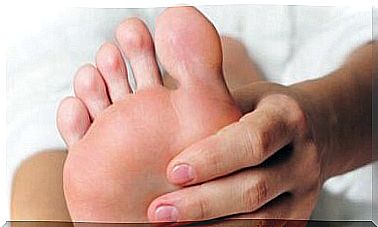Different Types Of Antihistamines And Their Uses

Antihistamines are medications used to reduce or eliminate the effects of allergies. To do this, they block the receptors to which histamine binds during allergic reactions.
Histamine is a substance that the body releases when it experiences an allergic reaction as you will read later in this article. In today’s article, we will tell you about different types of antihistamines and their uses.
Since the discovery of antihistamines (pyrilamine and diphenhydramine) in the 1930s and 1940s, scientists have developed hundreds of molecules with histamine-inhibiting properties. This drug has become very popular in recent years.
Also, scientists have developed and introduced second and third generation antihistamines to the market, which is a great advancement for medicine. These drugs are comparable in efficacy to first-generation antihistamines, but they have far fewer unpleasant side effects.
In addition to treating the symptoms of allergies, there are certain antihistamines that can help prevent vomiting, dizziness. In addition, there are products that can help induce sleep in patients with insomnia.
Histamine and Histamine Receptors

Histamine is a chemical that participates in and is involved in many processes that take place in the cells of the body. Of these processes, the role of histamine in, among others:
- allergic reactions.
- inflammations.
- the secretion of stomach acid.
- the transmission of nerve impulses.
When histamine is released and plays a role in these processes, it binds to a series of receptors scattered throughout the body. When histamine then binds to one of these structures, the body activates mechanisms and releases substances that activate and bind to other structures.
This causes a physiological response. The reactions it triggers depend on what the histamine binds to. These are some of the receptors that histamine binds to:
- Histamine 1 receptors. These structures are located in the bronchi, in the smooth muscles of the digestive system, and in the brain. When these receptors are activated, a response occurs from both the smooth muscle of the bronchi and the blood vessels.
- Histamine 2 receptors. H2 receptors are located in the lining of the stomach, uterus and brain. When something triggers these receptors, the permeability of the blood vessels increases and stimulates the secretion of stomach acid.
- Histamine H3 receptors. These are located in the brain and bronchi. They are responsible for cerebral vasodilation and may be involved in a feedback system or negative feedback. As a result, the histamine inhibits its own synthesis.
Different Types of Antihistamines and Their Uses

Classic or first generation H1 antihistamines
These types of antihistamines can easily cross the brain’s blood-brain barrier. That barrier consists of a kind of membrane that protects the brain. As a result of crossing this barrier and successfully binding to the receptors in the brain, antihistamines cause quite intense sedative effects.
In addition, they also have other properties such as anti-emetic effect and reducing motion sickness. The sedative and anticholinergic effects of these drugs cause these effects. Some examples of drugs from this group include:
Ethanolamines, especially the drug diphenhydramine. Its derivative, dimenhydrinate, has certain properties that allow you to use it to prevent motion sickness. In addition, there are studies that show that this active substance is effective in the treatment of dizziness and in the prophylaxis of vomiting after surgery (Spanish link).
- Ethylenediamines
- Alkylamines
- piperazines
- Phenothiazines
- Piperidines
Second generation H1 antihistamines
Second-generation H1 antihistamines are recommended for blocking H1 receptors not found in the brain. This is because scientists have removed the parts of the chemical structure that allow the substance to easily cross the brain barrier. Thus, these antihistamines cannot cross the blood-brain barrier.
As a result, they cause fewer adverse side effects. For example, they cause less sedation and fewer anticholinergic effects. Some examples of these drugs are:
- Loratadine. This is a drug that has almost no sedative and anticholinergic effects.
- Ebastine. Has no anticholinergic or sedative properties, but may cause weight gain as a side effect. It is also useful for treating seasonal allergies.
- Desloratadine. This drug helps in the treatment of acute cases of allergies.
Conclusion
As you can see, doctors usually prescribe antihistamines to treat allergies. However, they can also help prevent vomiting or induce sleep in patients with insomnia.
Now that you’ve read about the different types of antihistamines and their uses, you should talk to your doctor. He or she can tell you which antihistamine is best for your personal situation and prescribe this medication if necessary. After that, it is important to always follow the instructions that the doctor gives you.









